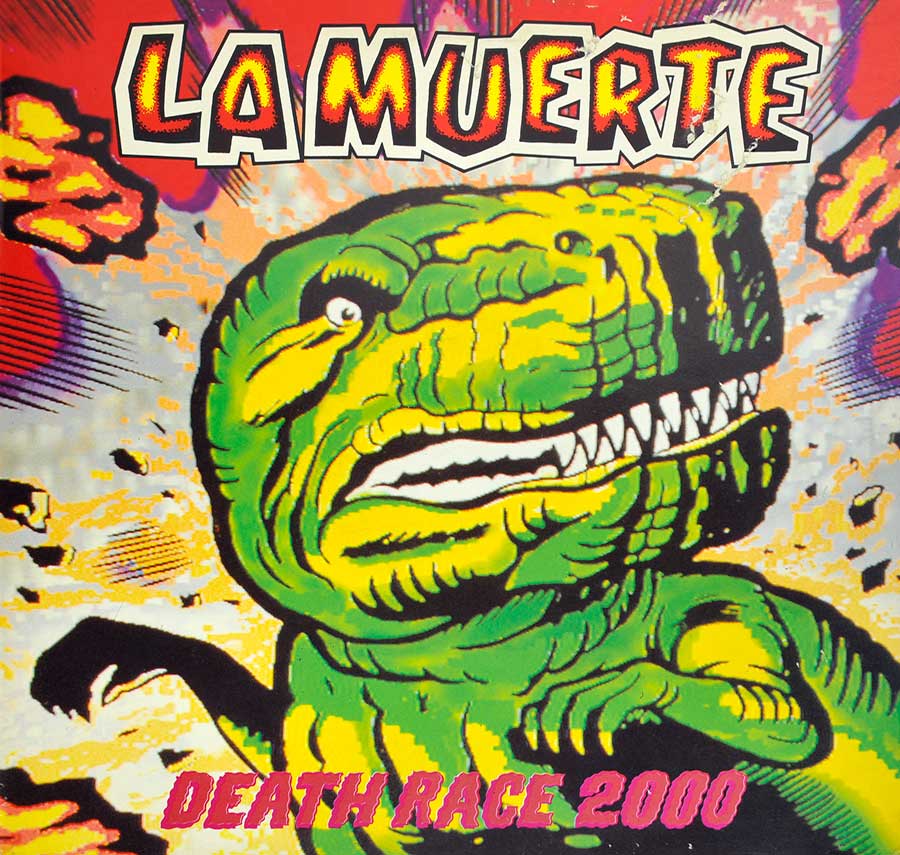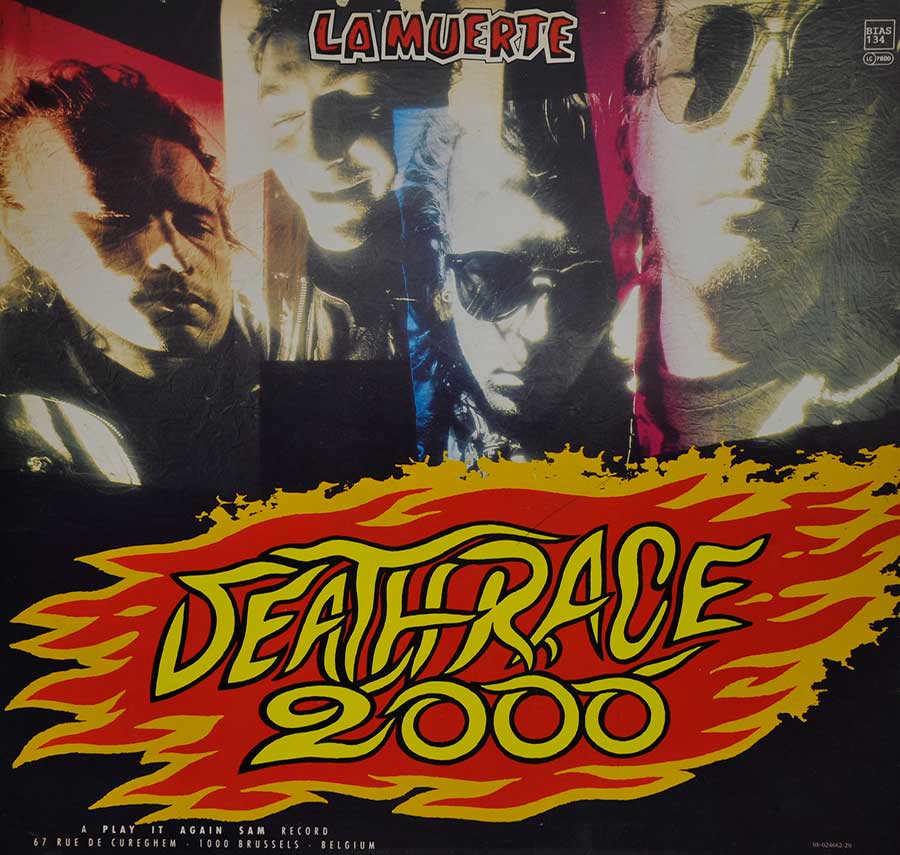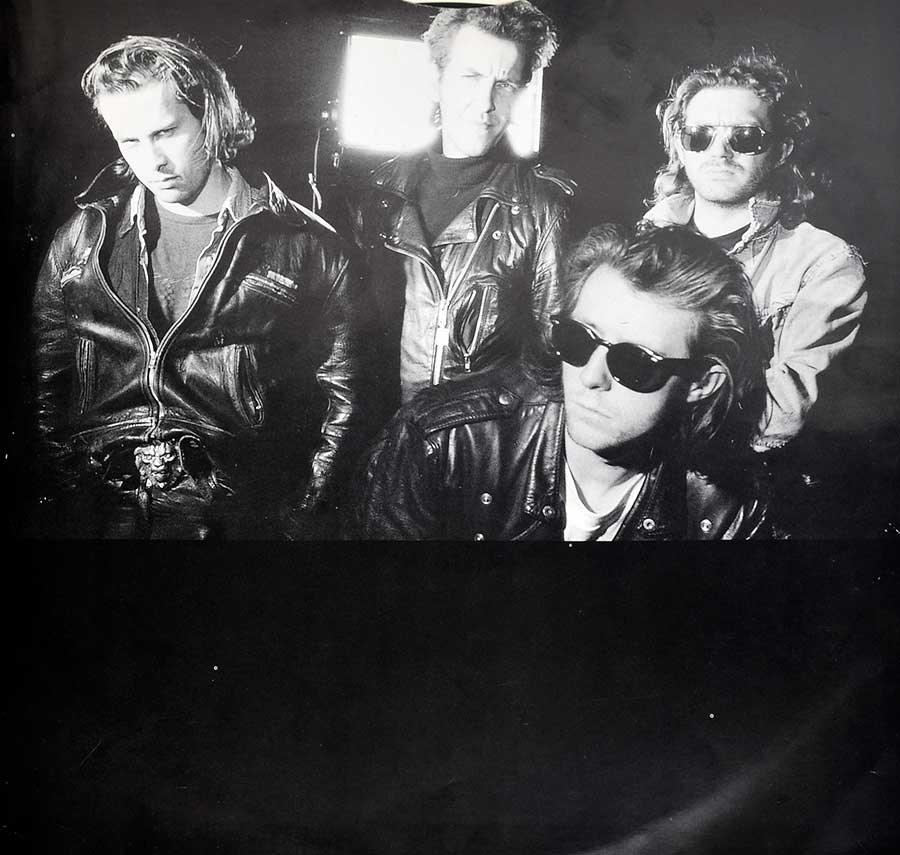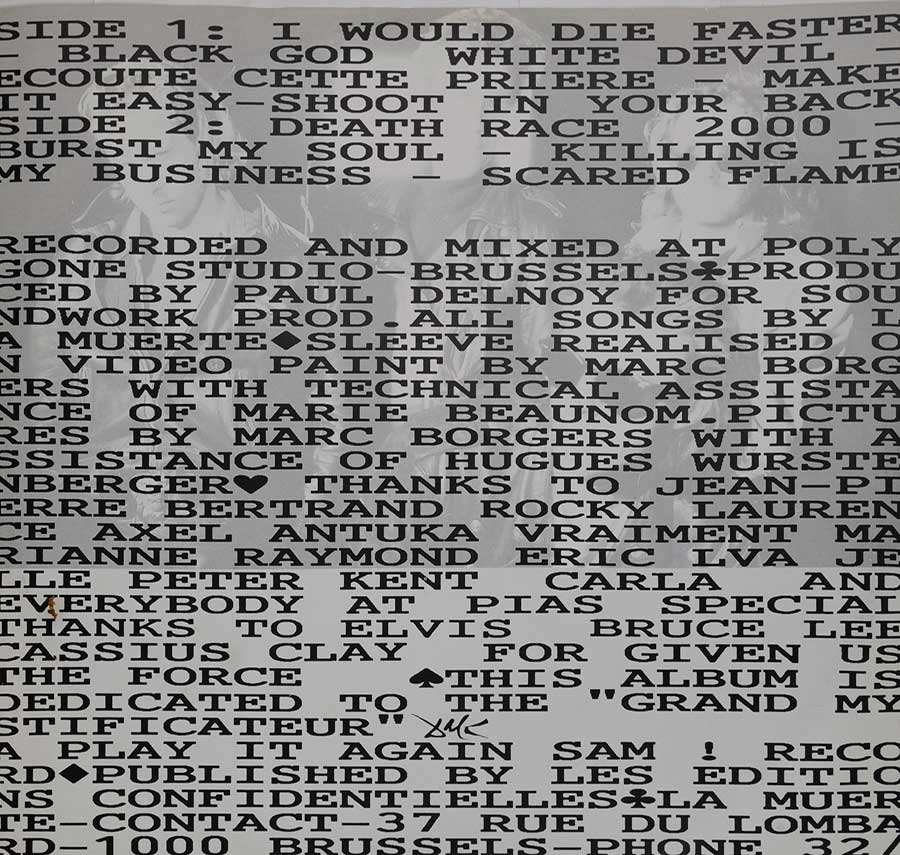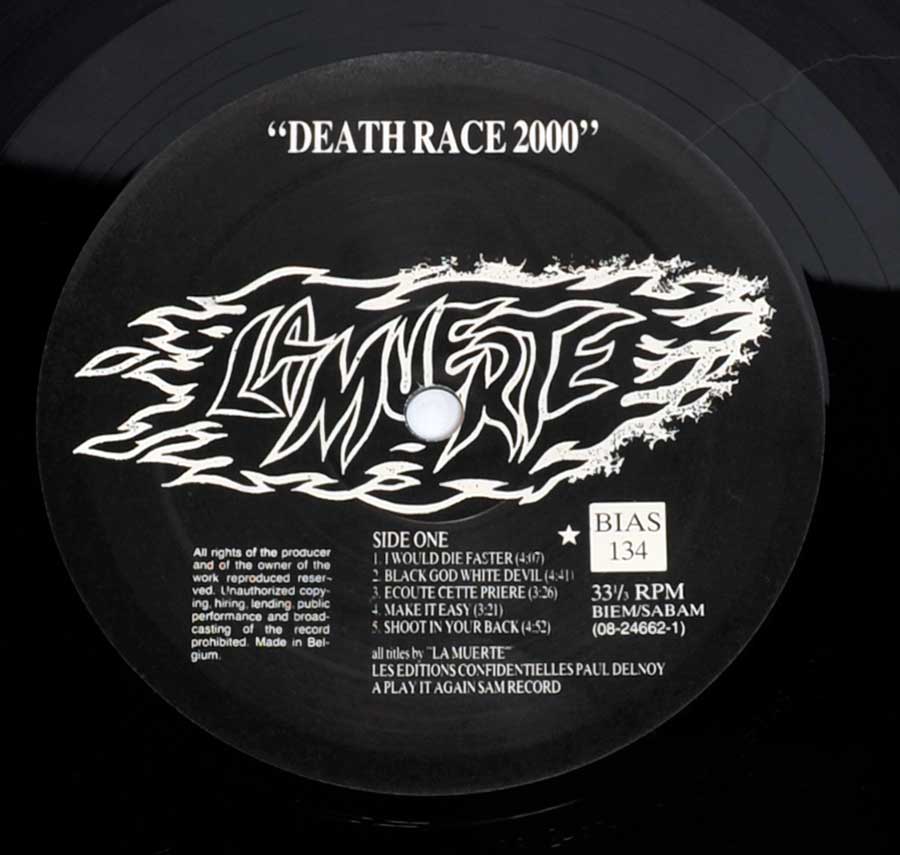"Death Race 2000" Album Description:
In the realm of underground and alternative music, there exist certain albums that stand as milestones, pushing boundaries and challenging conventions. One such landmark is "Death Race 2000", the second album by Belgian band La Muerte. Released as a 12" LP vinyl, this album brought forth a raw and intense auditory experience that left an indelible mark on the music landscape. With its distinctive sound, evocative artwork, and unapologetic attitude, "Death Race 2000" solidified La Muerte's reputation as a force to be reckoned with in the realm of alternative and industrial rock.
The Menacing Atmosphere
From the very first notes of "Death Race 2000", listeners are thrust into a dark and ominous soundscape. The album's title alone hints at a post-apocalyptic world of chaos and destruction, a theme that resonates throughout the tracks. La Muerte masterfully blends elements of punk, industrial, and metal, creating a unique sonic concoction that defies categorization. The relentless, pounding rhythms, aggressive guitar riffs, and Marc du Marais' guttural vocals contribute to a sonic assault that is both captivating and unsettling.
Lyrics That Cut Deep
What sets "Death Race 2000" apart from its contemporaries is not just its musical intensity but also its thought-provoking lyrics. The album addresses a range of themes, from societal decay to personal introspection, all delivered with an unfiltered honesty that leaves no room for compromise. The complete lyrics included within the album allow listeners to delve deeper into the band's narrative, revealing a layer of complexity beneath the surface aggression.
Artwork and Visual Identity
The album's cover artwork and accompanying visuals further enhance the album's impact. A striking fusion of monochromatic imagery and visceral design, the artwork captures the essence of the music. The visual representation of the "Death Race" concept is both alluring and haunting, drawing the audience into the world that La Muerte has created. The custom inner sleeve provides additional insight into the band's vision, creating a holistic sensory experience that complements the music.
Recording and Production
"Death Race 2000" was meticulously crafted at the Polyzone Studio in Brussels, a choice that undoubtedly contributed to the album's distinct sonic quality. Produced by Paul Denoy for Soundwork Productions, the album captures the raw energy of La Muerte's live performances while maintaining a polished production value. The chemistry between band members—Marc du Marais on vocals, Dee-J on guitar, Paul "Dunlop" Delnoy on bass, and Michel De Greef on drums—is palpable, resulting in a cohesive and powerful musical unit.
Legacy and Influence
Over the years, "Death Race 2000" has garnered a devoted cult following and has influenced subsequent generations of musicians. La Muerte's daring fusion of genres and unapologetic exploration of unconventional themes have left an indelible impact on the alternative music scene. The album's legacy serves as a testament to the power of artistic expression that pushes boundaries and challenges preconceived notions.
La Muerte Band Description:
La Muerte is a Belgian rock band that emerged in the mid-1980s and quickly gained recognition for their distinctive and powerful fusion of multiple genres, including punk, rock, industrial, and metal. Founded in Brussels, Belgium, the band's name translates to "The Death" in Spanish, reflecting their dark and intense musical style.
Formed in 1983, La Muerte consisted of four core members who played pivotal roles in shaping their sound and image:
1. Marc du Marais: Known for his gravelly and commanding vocals, Marc du Marais was a key element in La Muerte's aggressive and visceral sonic identity.
2. Dee-J (Dirk Bogaert): As the guitarist, Dee-J contributed blistering riffs and dynamic guitar work that added to the band's unique musical tapestry.
3. Paul "Dunlop" Delnoy: Paul Delnoy played bass, contributing to the band's rhythmic foundation with his powerful and driving basslines.
4. Michel De Greef: The drummer of the band, Michel De Greef, provided the relentless and pounding rhythms that characterized La Muerte's music.
La Muerte gained significant attention with their energetic live performances, often marked by their confrontational and provocative stage presence. Their music was a potent blend of aggression and melody, and they were unafraid to tackle challenging themes in their lyrics, addressing subjects like societal decay, introspection, and the darker aspects of human existence.
One of the band's standout works is the album "Death Race 2000", which exemplified their fearless approach to music-making. Released in 1986, this album captured La Muerte at the height of their creative power, and its raw energy and intense sound helped solidify their reputation as pioneers of the alternative and industrial rock scene.
Throughout their career, La Muerte released several albums and gained a dedicated following, particularly in Europe. Their music and attitude were influential in shaping the Belgian alternative music landscape and inspiring subsequent generations of musicians. While they may not have achieved mainstream commercial success on a global scale, La Muerte remains an iconic and respected name in the realm of underground rock and alternative music.
